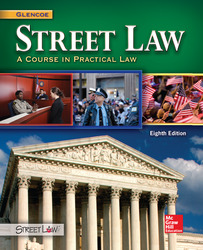
Street Law: A Course in Practical LawChapter 20: NegligenceChapter OverviewsTort law establishes standards for the care that people must show to one another. Negligence is the conduct that falls below this standard. Negligence law is concerned with paying victims for the injuries that have been caused by someone else's conduct. Elements of Negligence Negligence applies to many kinds of wrongful conduct. Four elements must be proven for a plaintiff to win a negligence action—duty, breach of duty, causation, and damages. The plaintiff must prove all of these elements in order to be successful in a negligence claim. Duty and Breach Everyone has a general duty to exercise reasonable care toward other people and their property. If a person acts unreasonably, he or she has breached the duty of care. In order to judge whether or not a person's conduct is reasonable, the law asks: Would a person of average intelligence and general regard for others have acted in the same way? If the answer is no, then the person's behavior was unreasonable. The law assumes that reasonable people do not break the law. Certain professionals, such as doctors, pilots, and plumbers, are held to the standards of reasonably skilled professionals in their field. Even minors are liable for the torts they commit. However, when deciding the reasonable conduct of a minor, the law usually compares a minor's conduct with other individuals of the same age, intelligence, and experience. Causation In order to prove causation, there must be proof that the defendant's actions actually led to the harm suffered by the plaintiff. The element of causation is broken down into two separate issues—cause in fact and proximate cause. If the harm would not have occurred without the wrongful act, then the act is the cause in fact. To prove proximate cause, there must be a close connection between the wrongful act and the harm caused. The harm that resulted must have been foreseeable from the wrongful act. Damages The basic idea behind damages is that the plaintiff should be restored—in the form of money—to his or her original position before the negligence occurred. Courts allow plaintiffs to collect for medical bills, lost wages, pain and suffering, and other losses. Defenses to Negligence Suits Even when a plaintiff can prove all of the elements of negligence, the defendant may be able to raise a valid legal defense. Most states allow a defense called comparative negligence. In comparative negligence the defendant and the plaintiff split the loss according to how much each person was at fault. For example, if a judge decides that a plaintiff was 60 percent responsible for injuries and the defendant only 40 percent responsible, each would only pay that particular percentage. As another legal defense, the defendant may argue that the plaintiff assumed the risk of the harm and should therefore be held responsible for the resulting injury. |  |















